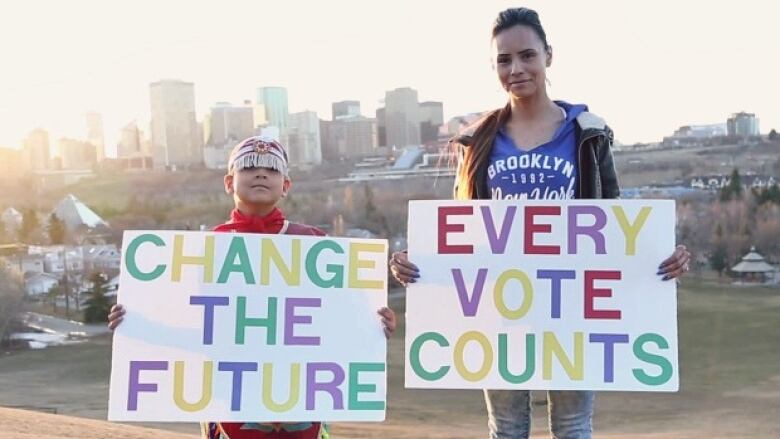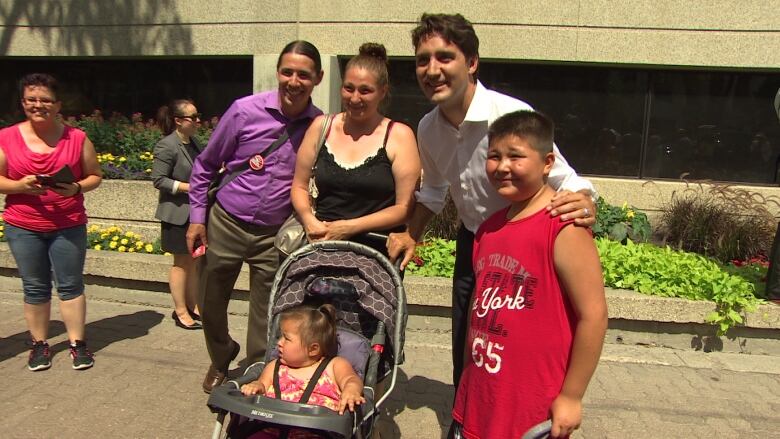3 reasons why First Nations voters are suddenly more engaged
New pro-vote push for federal election could represent major shift in First Nations political values

Just a few weeks into the federal election, it's fair to say this campaign will see adramatic rise in participation by indigenous voters.
Already there are more than 40 First Nation, Mtis or Inuit candidates seekingmainstream party nominations and a handful of ridings where all of the candidatesare indigenous.
As well, the main parties are making prominent political promises to First Nations, and there is much loud encouragement by the Assembly of First Nations,the Native Women's Association, and the Congress of Aboriginal Peoples, amongothers, to get out the vote.
This represents a paradigm shift.
- An indigenous guide to the 2015 federal election
- First Nations combat 'Un-Fair Elections Act' with Rock the Vote
- First Nations and the election: boycott or engage?
From the earliest days surrounding the introduction of voting, First Nation reactionhas generally oscillated between apathy and outright hostility.
The first real attempt to convince First Nationspeoples to vote was led by prime ministerJohn A. Macdonald in 1885 when he spearheaded the Electoral Franchise Act,which applied to Indians in Ontario, Quebec and the Maritimes. (Those in theNorth and West were excluded as unfit.)
At the time, "civilization" was actually a requirement to vote: First Nations peoplewere not forced to renounce status or treaty rights in the 1885 legislation, but theywere obligated to hold property in fee simple and demonstrate that they had"improved" that property.
The legislation was repealed in 1898, as was the Indian vote.
First Nation sovereignty
It took another sixty years before the second attempt at the federal level. In 1960John Diefenbaker extended the franchise to status Indians, an accompaniment tohis Bill of Rights.
And like Macdonald, Diefenbaker had an underlying civilizing impulse, in hiscase, hoping First Nations peoples would consider themselves individuals withinCanada.
For the Conservative leader, the franchise was about equality as much as it was aninducement to eschew the collective rights, land claims and self-government thatmany were vocally pursuing at the time.
Both of these not-so-subtle efforts at integration were apparent to First Nations andthey reacted in kind.

Later, even national chiefs of the Assembly of First Nations, like Georges Erasmusand Ovide Mercredi, questioned the utility of voting.
By 1996, the Royal Commission on Aboriginal Peoples bluntly noted that FirstNations people view Canada's electoral system as "inherently ineffective" and thatFirst Nations are instead "seeking nation-to-nation political relations which can't beachieved by representation in Canadian political institutions."
So what changed?
Anyone but Conservative
Throughout Canada's modern history there have been few government's morehostile to indigneousconcerns than the three led by Stephen Harper.
Nearly every piece of legislation affecting First Nations, from the FinancialTransparency Act to matrimonial real property legislation and even the Safe WaterAct has been passed unilaterally, without serious consultation.
- Harper rebuffs renewed calls for murdered, missing women inquiry
- First Nations Transparency Act may do more harm than good
- BillC-51has potential to scoop up aboriginal rights activists
- Dear Prime Minister, Elections Act not fair to First Nations

There is a widely held sentiment that First Nations must do what they can to oustHarper.
As the Grand Chief of the Assembly of Manitoba Chiefs, Derek Nepinak, recentlysaid: "We can mitigate the damages by voting for a different government."
So far in this campaign, First Nationsseem ready to join a chorus ofpreviously non-partisan interest groups veterans, school teachers, postal workers,scientists -- lobbying for change.
For the first time in the country's history, it appears (some) interests may bealigned.
Searching for leadership
There is probably no group in Canada more political than First Nations.
Direct action, legal battles, media activism are all common features of the averageFirst Nation life. And while there are thousands of "unofficial" leaders incommunities, a perpetual challenge is advocacy at the federal level.

This relative incapacitation, paired with significant outreach by the Liberal, Greenand New Democratic parties, makes Canadian politics now seem viable, whetherpeople are seeking alternatives to current political leadership or just a compliment.
Changing political values
Historically, there have been two broad First Nation views on the relationship withCanada.
First, there is the nationalist perspective, which considers First Nations sovereign,with self-determination pre-dating Canada, and rejecting Canadian legal andeconomic orders as fundamentally violent for truncating the practices ofnationhood.
The second, more liberal approach considers a place for First Nations peopleswithin Canada, a place that would allow them to relate to governments as nationsbut largely as individuals, with parliamentary and judicial institutions consideredappropriate sites of change.
While the nationalist approach has generally dominated First Nations history, andreflects the no-vote sentiment of yore, the new pro-vote push may be indicative ofchanging political values.
For example, the majority of First Nations peoplenow live in cities and havemany reasons to vote that are unrelated to rights and title.
Moreover, the demands of previous nationalist generations: jurisdictional concerns,land restitution, treaty federalism, etc., seem to be absent from the current votingdiscourse.
Finally, the partisan diversity of those First Nations' champions-of-the-votesuggests a trending individualistic (as opposed to collective) political outlook.
An odd future?
These three broad explanations are not meant to be exclusive. It may be that shadesof each blend into the new pro-vote paradigm. Or, that First Nations are simply,finally, becoming familiar with the idea of voting (it's only been a few decades,after all).
But until now, First Nationshave never neatly fit into the Canadianpolitical spectrum.
If either the Liberals and/or New Democrats do indeed form the next governmentand honour their campaign promises, there may be all the more incentive toparticipate in Canadian electoral and party politics.
It could represent, at least in part, the previously unimaginable and odd future thatMacdonald and Diefenbaker originally envisioned.












_(720p).jpg)


 OFFICIAL HD MUSIC VIDEO.jpg)
.jpg)



























































































